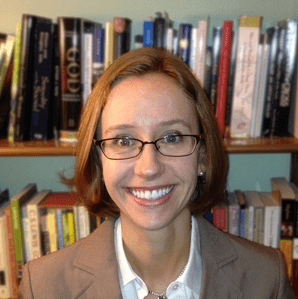 What did women do in the church in the “early church”? (By “early church” I mean after the New Testament up to the 4th Century.) A helpful sketch can be found in Everett Ferguson, The Early Church and Today (vol. 1: Ministry, Initiation, and Worship). Ferguson, one of the world’s finest patristic scholars and a professor emeritus at Abilene Christian University, whom I would call the “F.F. Bruce of Patristics,” finds six major themes, and for each theme Ferguson sketches evidence from the earliest sources:
What did women do in the church in the “early church”? (By “early church” I mean after the New Testament up to the 4th Century.) A helpful sketch can be found in Everett Ferguson, The Early Church and Today (vol. 1: Ministry, Initiation, and Worship). Ferguson, one of the world’s finest patristic scholars and a professor emeritus at Abilene Christian University, whom I would call the “F.F. Bruce of Patristics,” finds six major themes, and for each theme Ferguson sketches evidence from the earliest sources:
Women as Mothers: “women as wives and mothers gave the Christian home the strength that made it such a powerful influence in the spread of Christianity in the Roman world” (126). But he provides a beautiful letter from Tertullian to his wife from (the otherwise often quite irascible) Tertullian, and I will provide it here:
How beautiful, then, the marriage of two Christians, two who are one in hope, one in desire, one in the way of life they follow, one in the religion they practice. They are as brother and sister, both servants of the same Master. Nothing divides them, either in flesh or in spirit. They are, in very truth, two in one flesh; and where there is but one flesh there is also but one spirit. They pray together, they worship together, they fast together; instructing one another, encouraging one another, strengthening one another. Side by side they visit God’s church and partake of God’s Banquet; side by side they face difficulties and persecution, share their consolations. They have no secrets from one another; they never shun each other’s company; they never bring sorrow to each other’s hearts. Unembarrassed they visit the sick and assist the needy. They give alms without anxiety; they attend the Sacrifice without difficulty; they perform their daily exercises of piety without hindrance. They need not be furtive about making the Sign of the Cross, nor timorous in greeting the brethren, nor silent in asking a blessing of God. Psalms and hymns they sing to one another, striving to see which one of them will chant more beautifully the praises of their Lord. Hearing and seeing this, Christ rejoices. To such as these He gives His peace. Where there [p36] are two together, there also He is present; and where He is, there evil is not.
Women as Martyrs: persecution, of course, was an “equal opportunity experience,” and women excelled men in persecution. Heroic stories are told of Blandina and Perpetua, stories as gruesome as they are insightful into the stamina and courageous faith of women. Ferguson suggests devotion to martyrs led to the cult of the saints.
Women as Monastics: this theme has been studied by many, but notable in his sketch include the important observation that women “escaped” the chauvinism of males, the shackles of some sorts of expectations, and found liberation to be spiritual and to teach and to administrate in the monastic life. It was for some the path to liberation. There is evidence that monastic women taught both women and more broadly.
Women as Missionaries: Thecla was an early Christian missionary, a woman in the apocryphal Acts of Paul and Thecla. She was a teacher too, and then Ferguson mentions Nino, the gospeler of “Georgia.”
Women as Ministers: the emphasis here is on various forms of service (not preaching, teaching) by women in the early church, stuff that is both stereotypical service and well-known to early Christian women. Here he also points out restrictions of women, by some, in certain contexts: liturgical, public preaching, and baptizing.
Women as Mentors: tension now emerges because women were notable “mentors” to both women and men in the early church, including the famous Gorgonia, sister of Gregory of Nazianzus and Paula, close associate of Jerome. The tension here for me arises in that women were mentoring men and whether or not one wants to say this is private and not public, which Ferguson does believe, the substance of teaching is not erased. Wherever it happened, some women taught men. Yes, some males restricted females; Yes, by the fourth century it is clear that women did not do specific items of “ministry” in the church but to the degree they “formed” males through mentoring to that same degree is the restriction superficial and hypocritical.
I should add that Ferguson hails from the Churches of Christ, and the history of women “preachers” in the C of C is not good, and Ferguson himself defends the traditional view among the C of C. For an alternative view, see Sara Barton’s fine book and story: A Woman Called.















